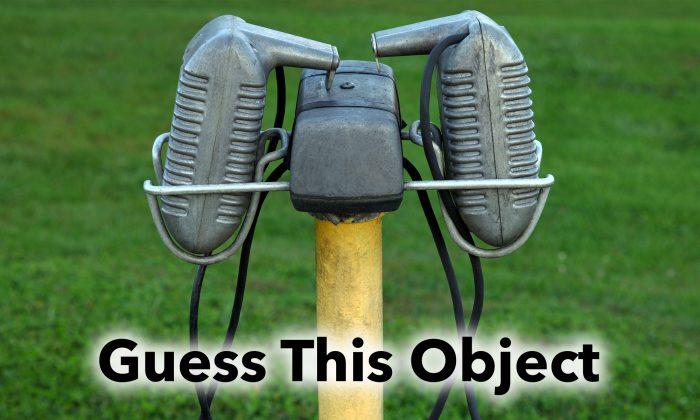With the advent of digital technology, many familiar objects have now become outdated, a thing of the past. These include many that were seen as state of the art or even futuristic in their own time. However, some of these great inventions are now mostly keepsakes that only old-timers or aficionados would have any clue what they were.
Here’s our challenge for today. Can you figure out what these strange contraptions are?

A metal pole in a field, with some metal boxes attached to it and wires hanging off of them. What exactly are these? Seems pretty strange to say the least. It’s hard to imagine what those were really used for. Maybe the remnants of a fast-food restaurant, like Sonic Drive-In from way back when, for people to put their orders in?
Not too far off, but not quite there either. Think about something else from the baby boom years after World War II that Americans just couldn’t get enough off. People wanted to drive everywhere in their big, comfy new cars that could fit the whole family and didn’t cost a fortune. In fact, they liked driving so much that they never wanted to get out. Hence the birth of McDonald’s and all the rest.
But there was another drive-in activity that became immensely popular at that time, which was the main form of entertainment before TV became widespread. That’s right; these strange, forgotten objects are for drive-in movie theaters.

For a generation that has been brought up on multiplexes and video streaming, it might be difficult to imagine, but people used to pile in the car and drive out to a big field or parking lot with a big screen on one side and watch the big hits of the moment. While the drive-in phenomenon dates all the way back to the 1920s, it came into its own as a family activity in the 1950s and 1960s, when there were more than 4,000 such open-air theaters across the United States.
But while taking a regular film projector outside and putting a big white screen on a billboard backing wasn’t any trouble, the sound was always an issue for drive-ins. How could they make sure that everyone could hear without causing noise disturbances? At first, large public address speakers were put up in the center of the lots or by the screen, but this meant that people in the back couldn’t really hear what was happening due to the delay caused by the sound traveling back.
Later in 1935, another idea was put forward by the Pico Drive-In Theater in LA, with rows of fixed speakers that faced cars as they pulled into their designated spots. Finally, in 1941, RCA developed these beauties, which were designed to give each car its very own cinematic sound experience. But how did it work?

Well, the post held two speakers, one for the car on the right and the other for the car on the left. The speakers were connected with cords to the post and through that, underground, to the overall sound system. Each speaker could be hooked over the edge of the window onto the car door, making sure everyone inside could hear.
While this brilliant system solved the problems that earlier arrangements created, it didn’t last too long as an even better system came around. Drive-in owners eventually realized that they could get sound straight inside the car via the radio, without any other expense than renting the time on a local radio station. As people drove in, they simply tuned their radios to a certain frequency and had the whole soundtrack in their car.
These days, drive-ins are experiencing something of a resurgence as people use digital projectors and speakers to do movable/pop-up showings. As for the old-time speakers, they’re still selling as a collector’s item on eBay and fetching anywhere from US$30 to US$75 depending on their condition.

Some real audio enthusiasts have even posted videos showing how to restore old speakers using LED lights to make convincing replicas that could even be used in your very own backyard drive-in theater. Now that’s something that should please the oldest and youngest in your family!




